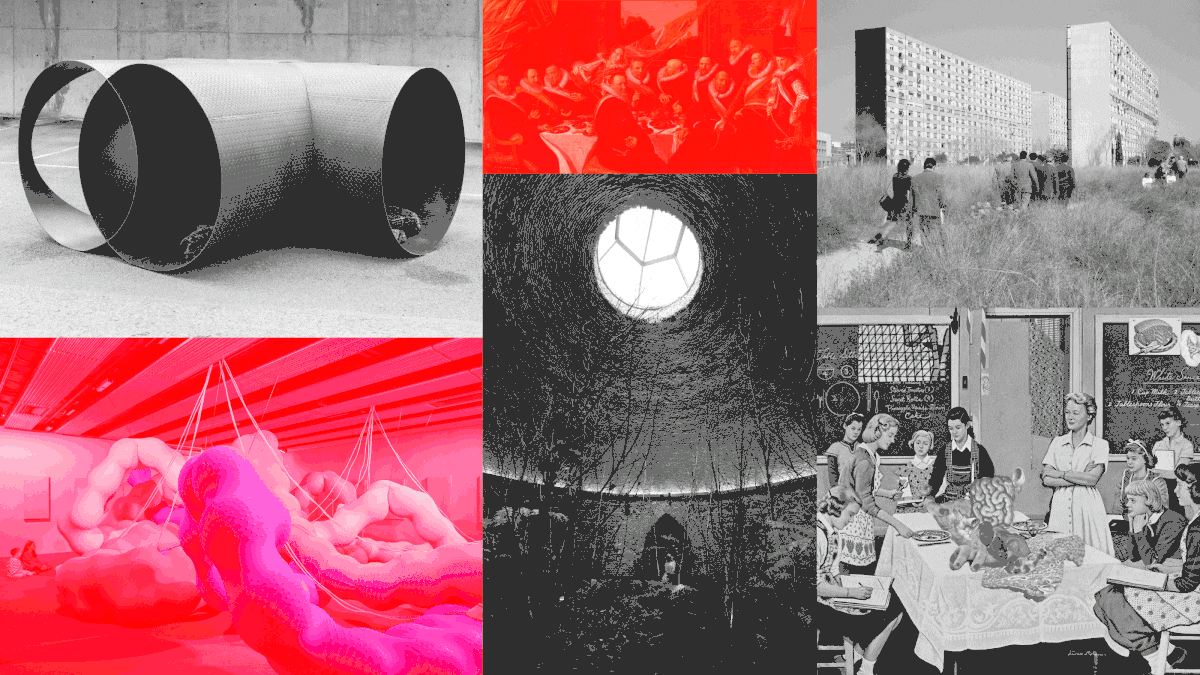"Mira" by Gertrude Sandmann: proud and elegant divas from the West Berlin subculture
Photo: Gertrude Sandmann / Berlinische Galerie / Photo: Anja Elisabeth WitteThe history of a city comes alive when you know the thoughts and feelings of the people who lived in it - and art offers a way to empathize with this. For example that of Gertrude Sandmann, a painter who lived in Berlin for most of her life.
Born in 1893, she was exposed to the history of her hometown hardest: because she was a woman, she was initially not allowed to study at the Akademie der Künste (which she did later). Because she was Jewish and lesbian, she was banned from working by the National Socialists, was persecuted and went into hiding.
After the war, Sandmann joined the autonomous women's movement and founded the group L 74 for older lesbian women. As combative as that may sound, her pastel drawings remained soft: Sandmann was still painting proud and elegant divas from the West Berlin subculture when he was just under 80. They are gentle and beautiful, but the portraits also reflect the disappointment and exhaustion of their Berlin life.
Sandmann's images of women are now part of an exhibition that gives Berlin city history a very personal touch. "Drawn City" in the Berlinische Galerie shows in almost 200 works the view of the art world on the metropolis since the end of the Second World War.
From rubble to red light glitter
Bertolt Brecht called Berlin a "heap of rubble near Potsdam", and it is precisely this that is shown by Werner Heldt's gloomy ruins. Existential problems of the post-war period become tangible here, there was grief and loss everywhere, everything was missing. Heldt also painted a door, because there were hardly any materials for his art.
Since then, the face of Berlin has been deforming again and again. The phase of the special status, the division of the city, the changing topography, the dictatorship, the years of being walled in, the historical revaluation: How did the artists feel about it, how did they see their surroundings? What did the architecture do to them, what did the changing street layout do?
Frustration also emerges in the pictures: satirical sheets by Gerd Wessel, for example, provide a deep insight into what GDR architecture meant for residents: residential complexes can only be climbed with ladders, prefabricated buildings are claustrophobically overcrowded. In 1985, the Wedding Art Office invited the Spanish artist Antonio Saura to work on the wall - he then aggressively painted over the photographs of the Berlin State Photo Office of the death strip. There are also disturbing science fiction architectural landscapes, which Berlin will hopefully not look like in the distant future.
Incidental street scenes are part of the image of Berlin, some drawings are supposedly random glances, others are projects on Hermannplatz that have been pursued for years or historically charged motifs that are reminiscent of the Nazi past. The Israeli-Danish artist Tal R captured the facades of sex establishments in funny, awkward colored pencil drawings that strangely contradict the promise of an erotic adventure. Egmont Schaefer's anecdotal city scenes date from the 1980s: ironically, he lets Prenzlauer Berg staff stroll and linger, passers-by appear relaxed or haughty.
In any case, the lively city staff becomes the particularly worth seeing section of "Drawn City": Posing divas and bohemian artists look from the wall, city children on the sidewalk and young figures in a refusal attitude.
Gertrude Sandmann's "Mira" also hangs there, an attractive blond curly-haired head in 1972 with sunglasses and red lips, but her demeanor betrays self-confident rejection, perhaps contempt. Artists and their Berlin, their living space: it is an internal view of urban diversity that treats its historical scars.
Exhibition : "The Drawn City. Works on Paper 1945 to Today", Berlinische Galerie , until January 4, 2021
Icon: The mirror

/cloudfront-eu-central-1.images.arcpublishing.com/prisa/VPFGNZM6LJAQDDMVAJ5KXNW7UM.jpg)












